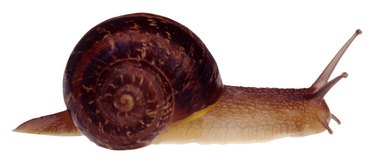
Look no further than your kitchen counter for natural, inexpensive fungicides and pesticides. Baking soda, dish soap and vegetable oil effectively treat many problems in the vegetable garden. Combine these products with other integrated pest management strategies to reduce your reliance on commercial products. Plant vegetables adapted to your area and space them so air circulates freely. Grow flowering herbs to attract beneficial insects and use soaker hoses or drip systems to reduce fungal diseases spread by wet leaves.
Homemade Fungicide
Video of the Day
Researchers at Cornell University discovered that baking soda is effective at suppressing powdery mildew, black spot, brown patch and other fungal diseases. Mix 4 tsp. baking soda, 4 tsp. liquid dish soap and 1 gallon water. Spray the mixture on plants weekly to prevent and control fungal diseases in the vegetable garden. This treatment is also effective on roses and other ornamental plants.
Video of the Day
Insecticidal Soap Spray
Insecticidal soaps and horticultural oils are effective at destroying many soft-bodied insects, such as aphids and leafhoppers. These products only work if they coat the insects' bodies and require frequent reapplication. Mix 2 tbsp. cooking oil, 2 tbsp. liquid dish soap and 1 gallon water. Spray the solution on the tops and undersides of plant leaves to control insects.
Plant Safety
Homemade fungicides and pesticides made with baking soda and dish soap won't hurt humans, pets or beneficial insects, but they can burn plant leaves, especially when applied in bright sunlight. Water the plants well before applying these chemicals and make applications in the early morning. Do not increase dosage or ingredient amounts.
Considerations
Powdery mildew and other fungal diseases usually need no treatment if the diseases appear late in the season. However, early infections may become so severe that they damage crops. Insecticidal soap sprays do not treat hard-shelled insects or caterpillars. Handpick squash beetles and other hard-shelled insects. Treat caterpillars with Bacillus thuringiensis.